Furred and feathered visitors come calling in search of a meal
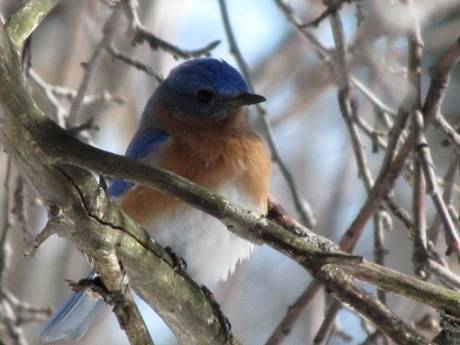
We had a couple of unexpected visitors to our place last weekend. Being February and given the sort of winter we've had, it was more than a bit of a surprise to see a pair of bluebirds come calling last Saturday morning.
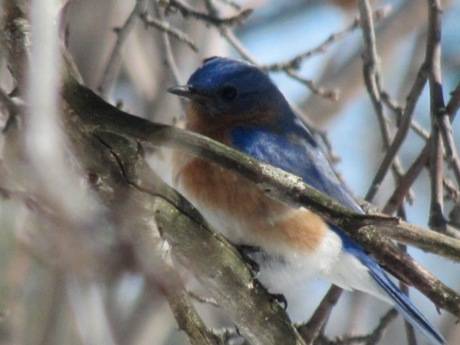
A male and female alit in the apple tree and I never thought they'd sit tight with the powerful wind gusts whipping the branches about. But sit they did and I was able to get several shots of the male while the female was obscured by branches.
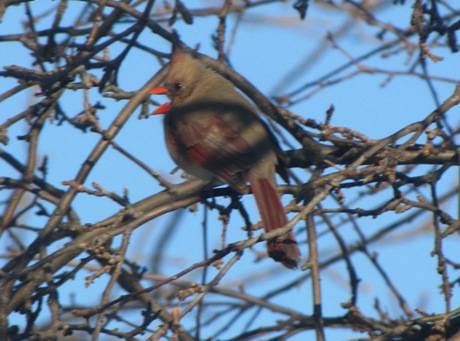
A female cardinal seems to be shrieking with delight, perhaps celebrating the sunshine and blue sky
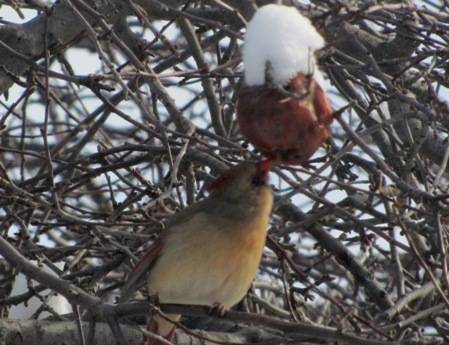
This cardinal seems content to sample a snow-capped frozen apple.
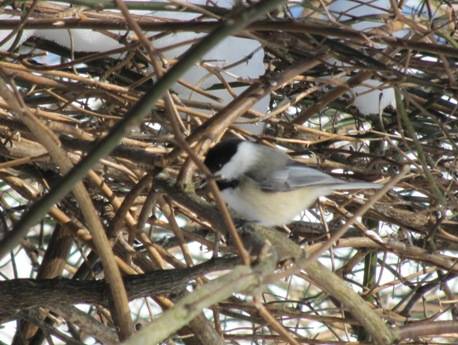
A chickadee sticks close to brushy cover.......
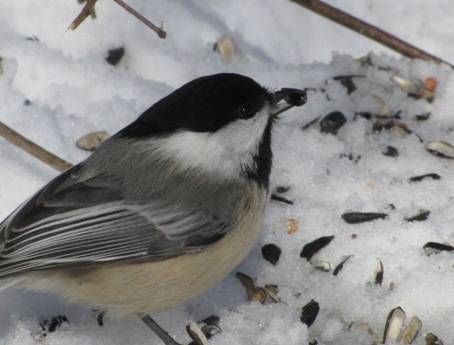
while another helps itself to sunflower seed and millet.
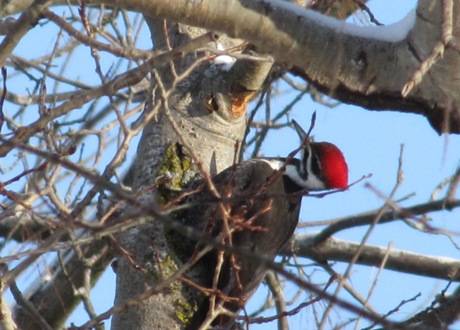
Pileated woodpeckers have shown up quite regularly this winter......we often hear their raucous call long before they come into view.
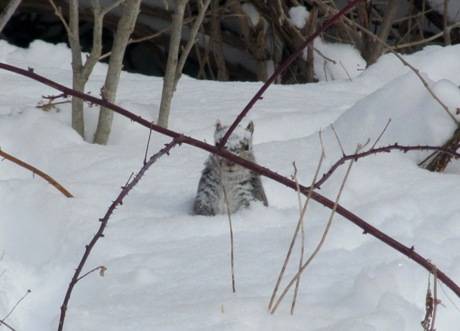
How did this gray squirrel get a snow hat?
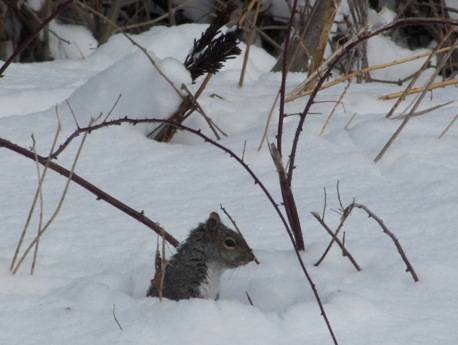
He and some friends were digging for the walnuts I had tossed into the briars last autumn. I knew the squirrels would find them, but I never thought they would wait till there were several inches of snow on the ground before doing so.
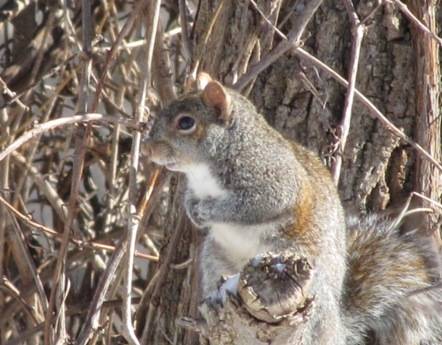
This guy, meanwhile, appears to be rubbing his paws in anticipation while eyeballing the bird feeder.
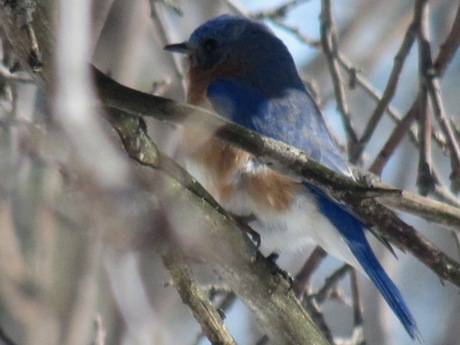
Prior to last weekend, the last bluebird I saw was just before Thanksgiving. Winter set in on us right after that. I've never seen one this early in the year. I've heard or read somewhere that bluebirds sometimes winter here, it all depends on the weather and availability of food. Regardless, I know we've got some single-digit lows coming later this week, but I've always felt Mother Nature was pretty good at predicting the weather.....here's hoping!
